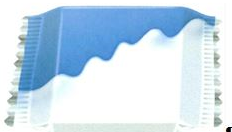The new generic top-level domain (gTLD) .africa, a regional domain for users located in and out of the continent, has been officially validated by ICANN.
More than a decade after its other regional counterparts, such as .eu or .asia, the .africa gTLD has been the subject matter of a legal conundrum for years.
Indeed, a conflict between two operators had to be escalated up to U.S. courts before a final decision entrusted the management of the gTLD to a South African company, ZA Central Registry NPC.
This new gTLD will allow the African continent to seize the full potential of the internet revolution, on a continent where the mobile connectivity is now allowing bypassing the expensive copper wire infrastructure development.
The new .africa domain name extension is expected to lead the continent in its global effort to take part in the global information society and become a strategic place to invest.
Accessibility to the new domain name will be gradual: starting on 6 April 2017, a 60-day preliminary phase will allow trademark owners or companies to benefit from a priority right, as well as African countries that intend to protect certain emblematic names such as “Mount Kilimanjaro”. Then, starting on 2 June 2017, an Early Access Phase (EAP) will take place to prevent any hindrance or ransoming by ill-intentioned people.
The .africa TLD will finally be open to all on 4 July 2017, on a first-come/first-serve basis.
K&L Gates has more than 225 lawyers, including approximately 100 registered patent lawyers, agents, and technology specialists with technical or advanced science degrees – nearly 20 with Ph.D.s – who devote their practices to helping clients establish, enforce, and leverage their intellectual property rights worldwide.
We can thus highlight the pitfall to avoid, the topics on which to focus the attention and better defend and protect our clients’ intangible assets with regard to the opening of this new gTLD, on this emerging market.
By: Claude Armingaud, Alexandre Balducci and Solenn Le Guen

